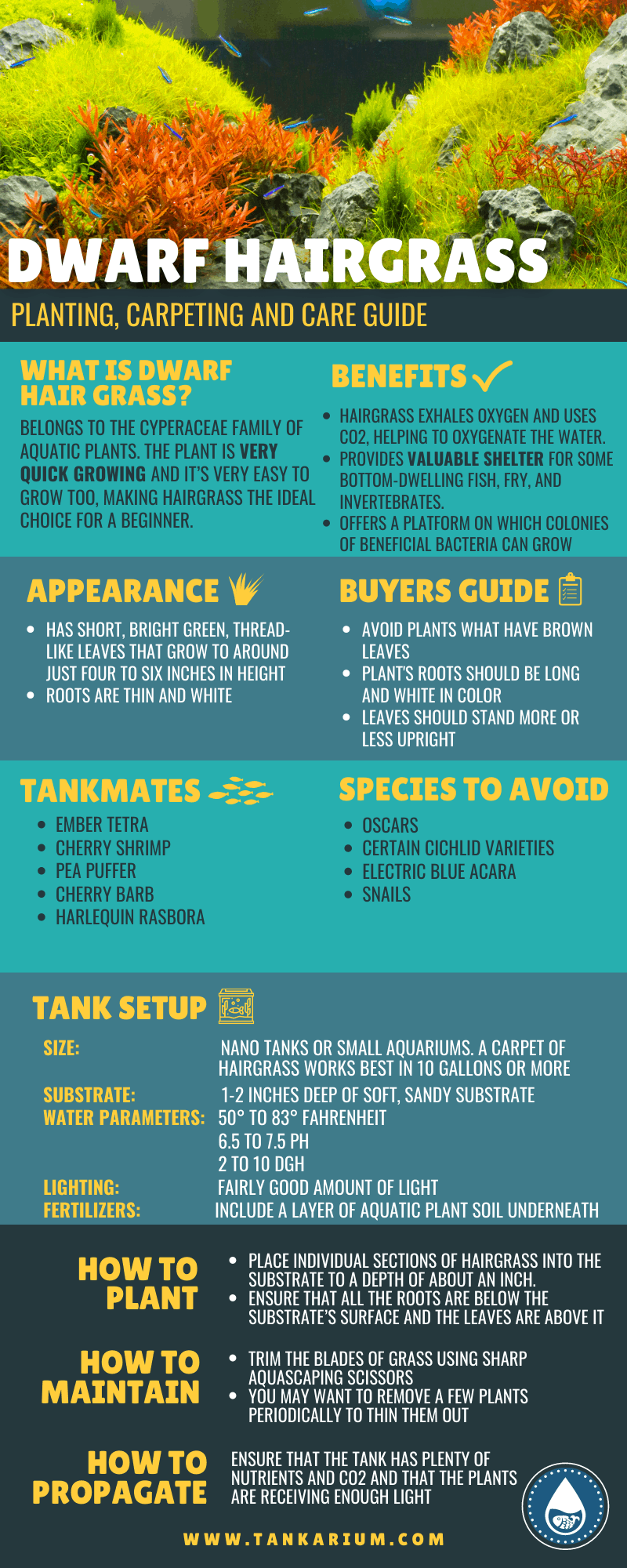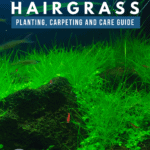Dwarf hairgrass is a very popular and versatile mini aquarium plant that can be used to create a lush, bright green carpet across the substrate of a tropical freshwater tank. Fish love to forage among the waving fronds of the grass, and vulnerable fry can seek shelter there. Even better, the plant is relatively easy to grow, making it a good choice for novice and experienced hobbyists alike.
In this guide, we explain how to plant dwarf hairgrass and how to care for this beautiful plant so that it thrives.
Dwarf Hairgrass Overview
Scientific Name
Eleocharis acicularis, Eleocharis parvula
Common Name (species)
Dwarf Hairgrass
Family
Cyperaceae
Care Level
Easy
Growth Rate
Rapid
Maximum Size
6 inches
Growth Habit
Carpet plant
Minimum Tank Size
10-gallon
Temperature Range
50° to 85° Fahrenheit
Water Hardness
2 to 10 dG
pH Range
6.5 to 7.5 pH
Lighting
Moderate
Propagation
Runners
Benefits Of Dwarf Hairgrass
In the aquarium, as well as lending a beautiful, vibrant natural look to your aquascape, dwarf hairgrass has many uses and benefits.
Like all living plants, as part of the process of photosynthesis, hairgrass exhales oxygen and uses CO2, helping to oxygenate the water. Also, the nitrates that are contained in aquarium water can be harmful to your fish, and the dwarf hairgrass plants utilize those potentially toxic chemicals as fertilizer, making the environment healthier for your livestock.
As dwarf hairgrass is a carpet plant, it can provide valuable shelter for some species of bottom-dwelling fish, fry, and invertebrates. Some creatures also like to graze on the grass or on the algae and microbes that it can harbor.
Finally, the dense habit of the plant offers a platform on which colonies of beneficial bacteria can grow, boosting the biological filtration capacity of the tank.
What Is Dwarf Hairgrass?
There are two species of the dwarf hairgrass plant; Eleocharis acicularis and Eleocharis parvula, both belonging to the Cyperaceae family of aquatic plants.
Dwarf hairgrass can be found in many areas of the world from North America to Europe, Asia, and South America, where it grows in shallow water with lots of light. The plant also grows above the water on the shoreline, making it suitable for use in paludariums, as well as in fish tanks.
The plant is very quick growing and it’s very easy to grow too, making hairgrass the ideal choice for a beginner.
Aquascaping Options
In the aquarium, dwarf hairgrass is primarily grown as a carpet plant, covering the substrate with a vibrant meadow of shimmering green, as the plant’s fronds wave in the current.
If you want a thick, dense lawn effect that completely covers the substrate, you should plant the hairgrass in tight clumps. Alternatively, you could use small groups of plants dotted around the bottom of the tank, perhaps using them to soften the appearance of rocks or decorations and to provide a more 3-D effect to the aquascape.
Interestingly, Dwarf hairgrass has a peculiar habit of “remembering” the shape and length that you choose for it. Generally, if you trim the plant very short before planting, the growth rate will be slower, and the plant won’t grow very long. However, if you leave the plant untrimmed, you’ll finish up with a wilder, less cultivated result.
Dwarf Hairgrass Appearance
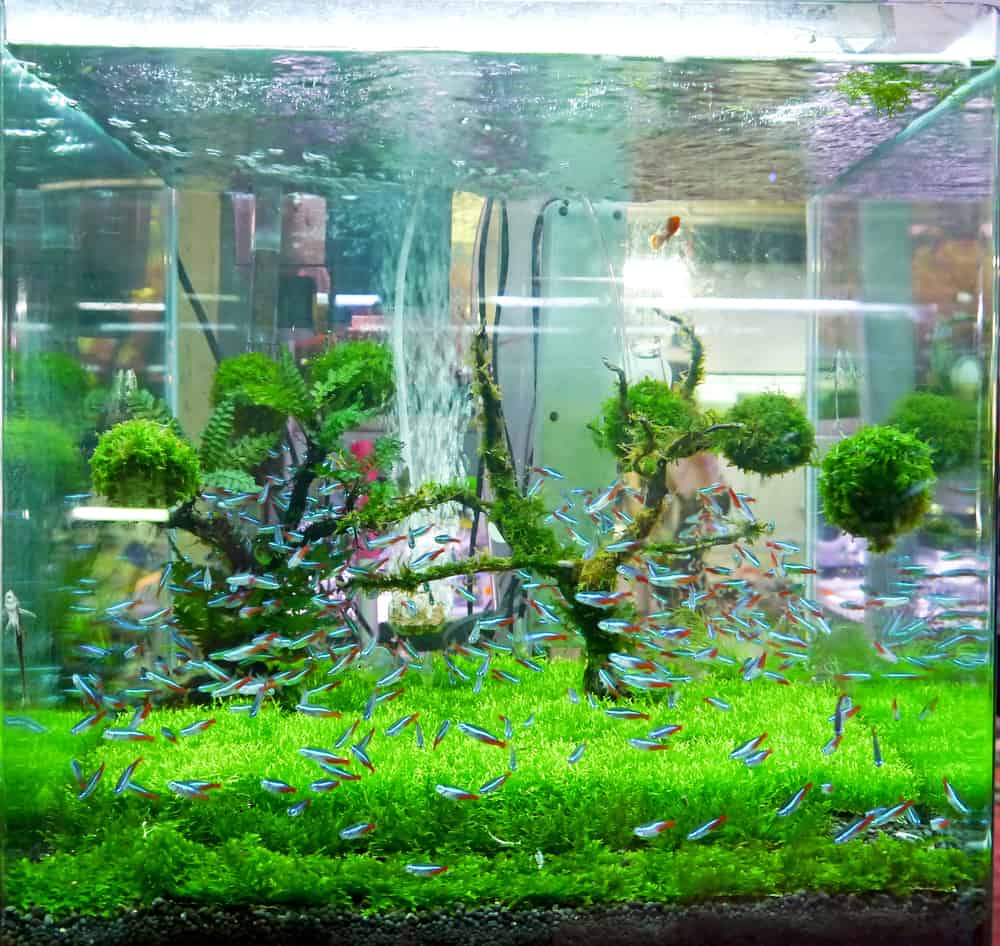
The plant’s common name pretty much describes what it looks like.
Dwarf hairgrass has short, bright green, thread-like leaves that grow to around just four to six inches in height, resembling a lawn. The plant’s roots are thin and white, growing beneath the substrate and forming a dense mat once the plants are established.
Eleocharis Acicularis VS Eleocharis Parvula
Although both species of Dwarf hairgrass look similar, Eleocharis acicularis tends to develop a curlier form and grows slightly taller than its cousin, Eleocharis parvula. Because the two plants look very similar, they are often mislabeled in fish stores, so be sure to check which plant you’re buying.
Buyers Guide
Dwarf hairgrass is very popular, so you’ll usually find the plant stocked in most good fish stores, and it’s also available online.
The plant is easy to propagate, more of which later, and for that reason, it’s cheap to buy. The plants are supplied in small plastic pots with their roots wrapped in protective wool, and you can expect to pay around $5 per pot.
Choosing Healthy Specimens
Although Dwarf hairgrass is relatively easy to grow, you have the best chance of success if you pick healthy specimens to start with. So, watch out for the following when selecting your plants:
- Avoid plants that have brown leaves. The blades should be a bright, vibrant green color. That’s crucial because if the leaves are unhealthy, the plant will be unable to photosynthesize.
- The plant’s roots should be long and white in color. Don’t choose plants whose roots are very short or that appear torn or brownish in color; plants with damaged roots will be unable to extract the nutrients they need for healthy growth from the water column and substrate.
- The plant’s leaves should stand more or less upright, supporting their own weight. Flaccid, drooping leaves indicate that the plant is unhealthy and may struggle to acclimate to a new environment.
Tankmates
Dwarf hairgrass can safely be housed with most other aquatic plant species and tropical fish.
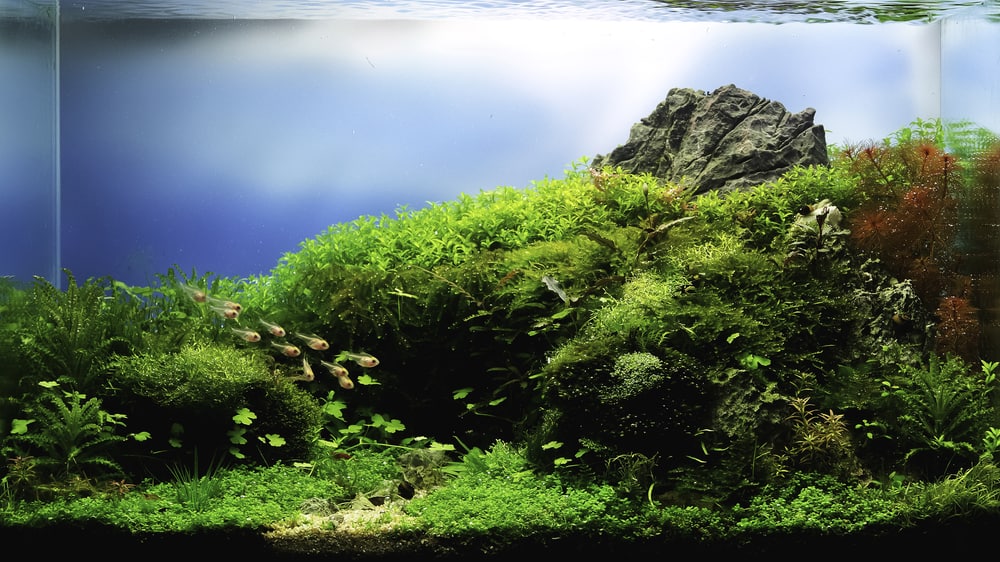
That said, once it gets established, a carpet of hairgrass is thick and dense, and it can outcompete other plants for nutrients and space, so much so that weaker plants may die. When it comes to fish, Dwarf hairgrass is not as appetizing as some broad-leafed and tender species, so it tends not to be on the menu.
Compatible Fish Species
Pretty much any species of small to medium-sized fish will be fine in a tank with hairgrass. Tetras, platys, guppies, mollies, gouramis, and barbs are all suitable community tankmates that will enjoy a setup with a hairgrass carpet, and they share similar water requirements too. If you keep livebearers, their vulnerable fry will benefit from the shelter that Dwarf hairgrass provides within its dense meadow-like carpet.
Here are just a few examples of fish species that are suitable for life in a setup with Dwarf hairgrass.
Ember Tetra (Hyphessobrycon Amandae)
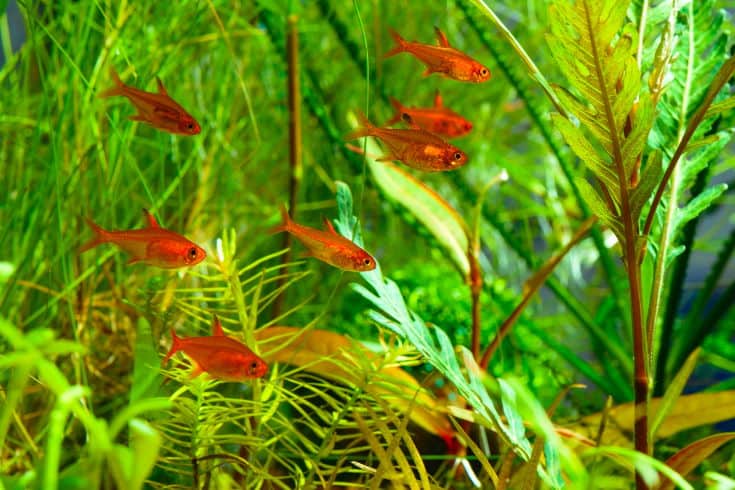
The Ember tetra is a brightly colored, tiny schooling fish that originates from the black waters of South America.
These fish are hardy, peaceful creatures that make a lively, attractive addition to any community setup. Ember tetras love a planted tank that includes lots of swimming space, as they tend to hang out in the middle area of the water column.
pH
5.5 to 7.0
dKH
1 to 10
Temperature
73° –84° Fahrenheit
Size
.75″
Temperament
Peaceful community fish
Swimming
Midwater shoaling
Cherry Shrimp (Neocaridina Davidi)
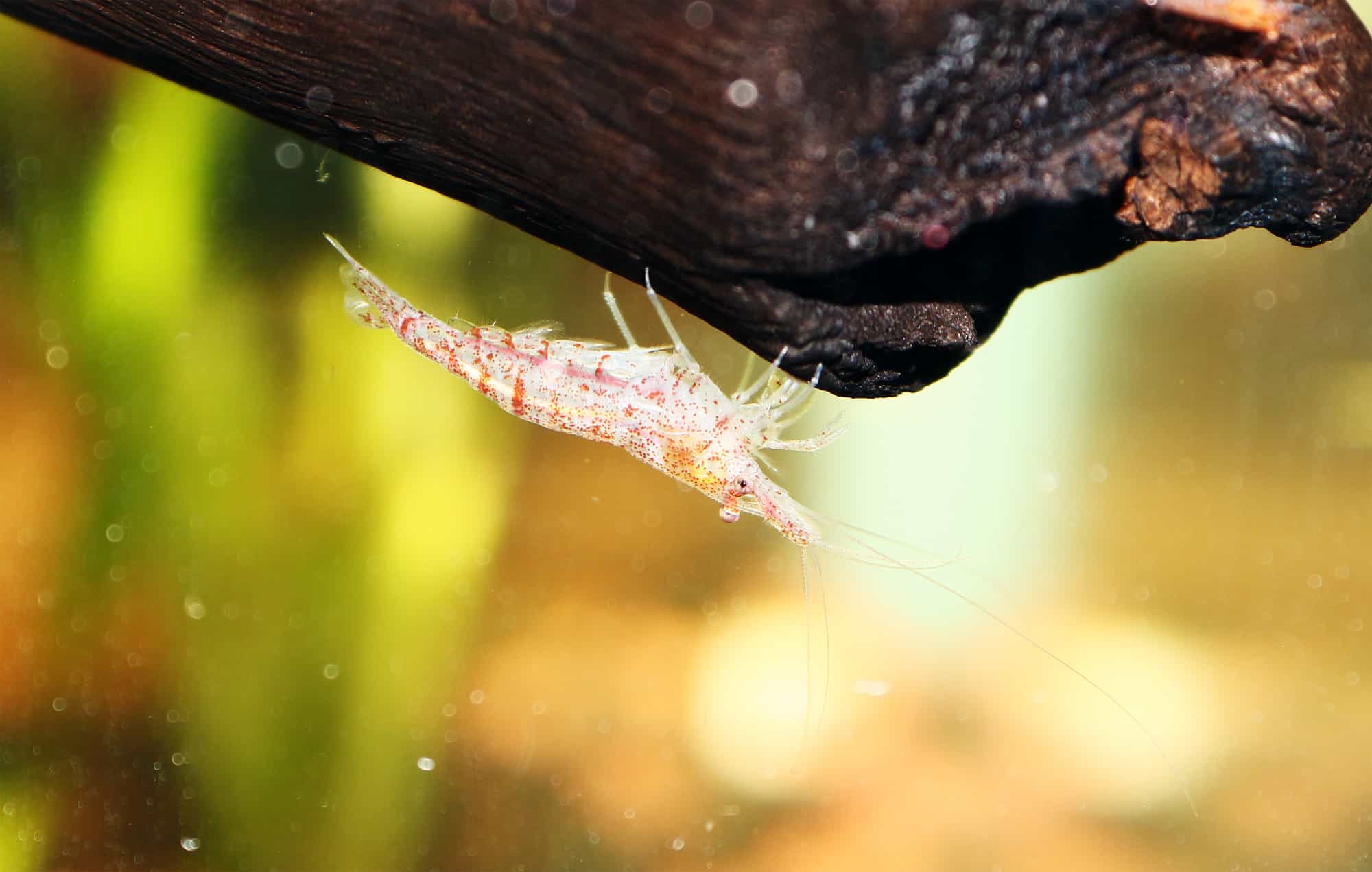
A group of six or seven Neocaridina davidi makes the perfect cleaning crew for a freshwater planted tank that includes hairgrass. These gregarious, active little guys come in a range of colors, including the ever-popular cherry shrimp.
These fun, cute shrimp spend most of their time vacuuming up uneaten food and plant waste from the bottom of the aquarium, helping to keep your tank clean and removing potential pollutants from the water.
pH
6.5 to 8.0
dKH
8 to 20
Temperature
70° to 79° Fahrenheit
Size
1.6″
Temperament
Active, peaceful
Swimming
Bottom
Pea Puffer (Carinotetraodon Travancoricus)
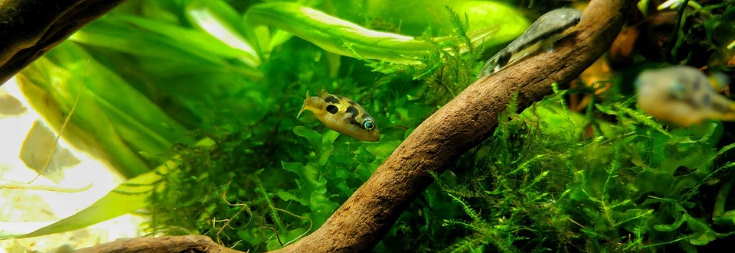
If you want to add something a little bit different to your freshwater setup, the Pea Puffer is cute, curious, and chock-full of personality and sass.
These fish are a little more demanding than some of the more commonly seen aquarium favorites when it comes to care, but they are happy in a planted tank and make a nice addition to a community.
pH
6.8 to 8.0
dKH
5 to 25
Temperature
72° to 82° Fahrenheit
Size
1″
Temperament
Depends on the individual but generally peaceful
Swimming
All areas of the water column
Cherry Barb (Puntius Titteya)
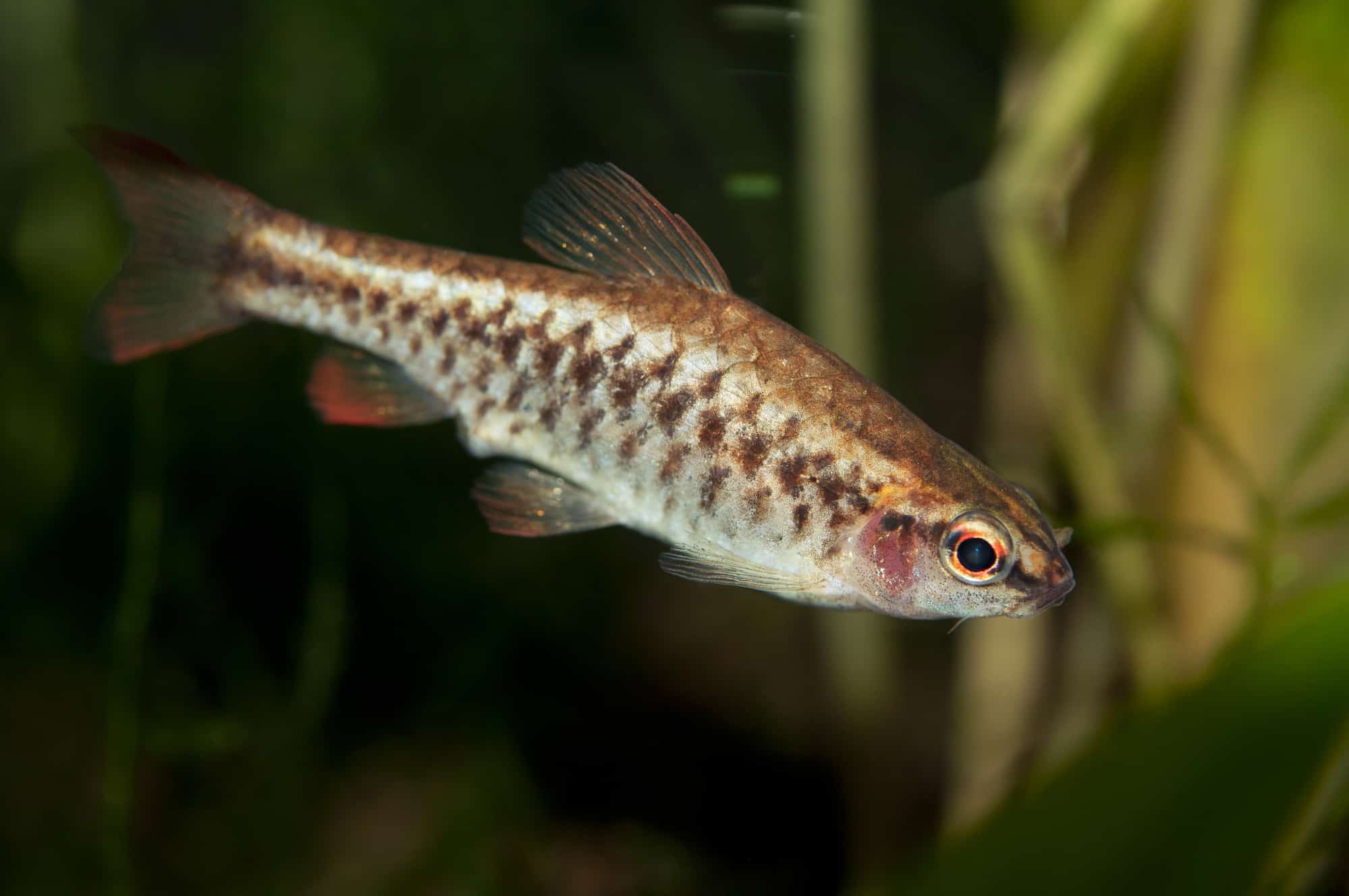
These little fish are one of the more peaceable barbs, and they make a bright, lively addition to a community tank. The Cherry barb is a shoaling fish that is hardy and easy to keep, and does very well in planted tanks.
pH
6.0 to 7.5
dKH
4 to 15
Temperature
73° to 81° Fahrenheit
Size
1.5″
Temperament
Peaceful, shoaling species
Swimming
Top to midwater
Harlequin Rasbora (Trigonostigma Heteromorpha)
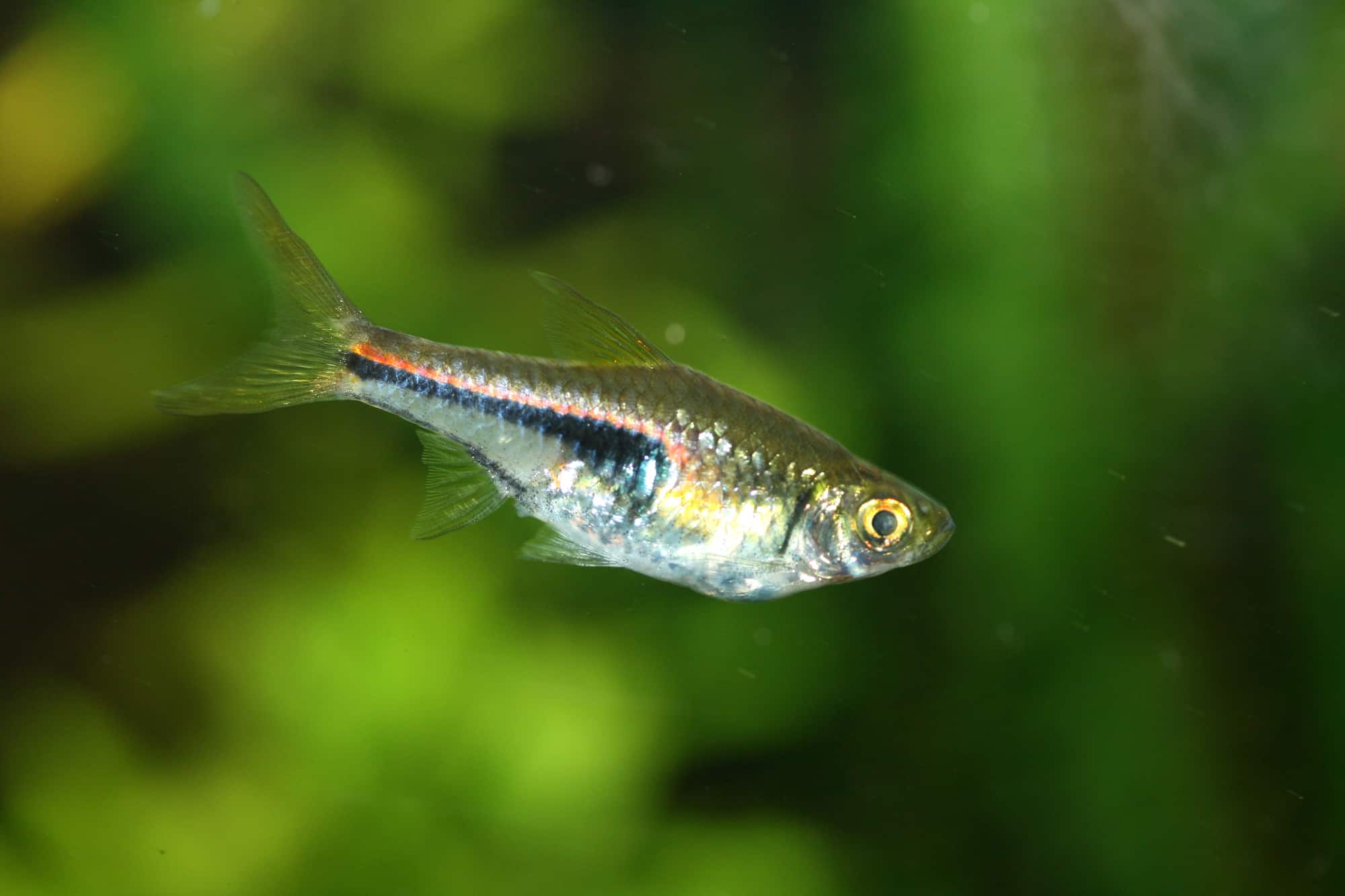
Harlequin Rasboras are a very pretty, active species of schooling fish that makes a good alternative to tetras, especially if you want a small fish that doesn’t have the nippy habit of some tetra varieties.
Harlequins spend much of their time swimming in a shoal in the midwater area, so a tank with carpet planting is perfect for their needs.
pH
0.0 to 7.5
dKH
1 to 12
Temperature
70° to 83° Fahrenheit
Size
2″
Temperament
Peaceful, shoaling species
Swimming
Top to midwater
Bottom-dwelling Species
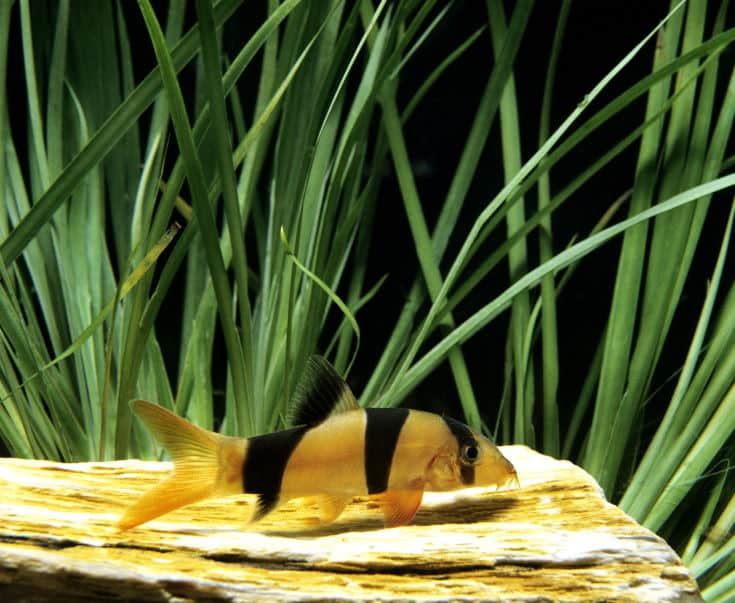
Bottom-dwellers, such as Corydoras catfish, loaches, and small catfish species, all enjoy the hiding places that hairgrass provides and will spend much of their time foraging among the plant bases for dropped food that drifts down from above.
However, all these fish do need some clear areas in which they can swim and dig if they want to. So, if you have an extremely dense carpet of hairgrass that completely covers the floor of your tank, bottom-dwellers might not be the best choice for your setup.
Fish Species To Avoid
There are a few fish species that are best avoided if you have hairgrass in your aquarium. Some fish, such as Oscars and certain cichlid varieties, including the Electric Blue Acara, like to burrow and dig, and they will certainly damage the delicate root systems of the plant.
Snails
Unfortunately, many of the snail species that are so popular with aquarists tend to eat or wantonly damage plants, including hairgrass, leading to bare patches in your carefully cultivated verdant lawn. However, if you desperately want to keep snails in your community setup, I would suggest that you choose Assassin snails, as they are one species of mollusk that will most likely leave your plants alone.
Shrimp
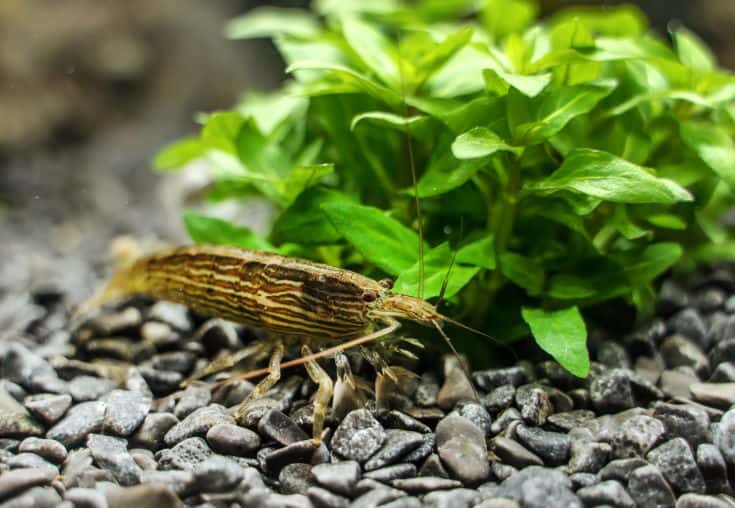
Shrimp are an extremely popular addition to many home aquariums, as they make a great clean-up crew that won’t bother with your plants. In fact, shrimp will spend much of their time foraging among the hairgrass for scraps of food and debris that they can eat, and they will appreciate the shelter that the lawn provides.
Tank Setup
In nature, Dwarf hairgrass grows in shallow, tropical freshwaters, often along the shoreline of lakes and rivers where there’s plenty of light, a moderate flow, and a soft, muddy, or sandy substrate. If you can recreate that habitat in your home aquarium, your plants should grow well and thrive.
Tank Size
As Dwarf hairgrass is such a low-growing plant, it’s perfect for nano tanks and small aquariums. However, a carpet of hairgrass works best in tanks of ten gallons or more.
Substrate
Dwarf hairgrass needs a layer of substrate in which to grow, ideally around one to two inches deep. A soft, sandy substrate is best, as the plant’s roots are very delicate and may struggle to penetrate a thick layer of hard gravel. Also, to propagate and spread, the plant sends out runners, which find pushing through soft sand much easier than battling against gravel.
Water Parameters
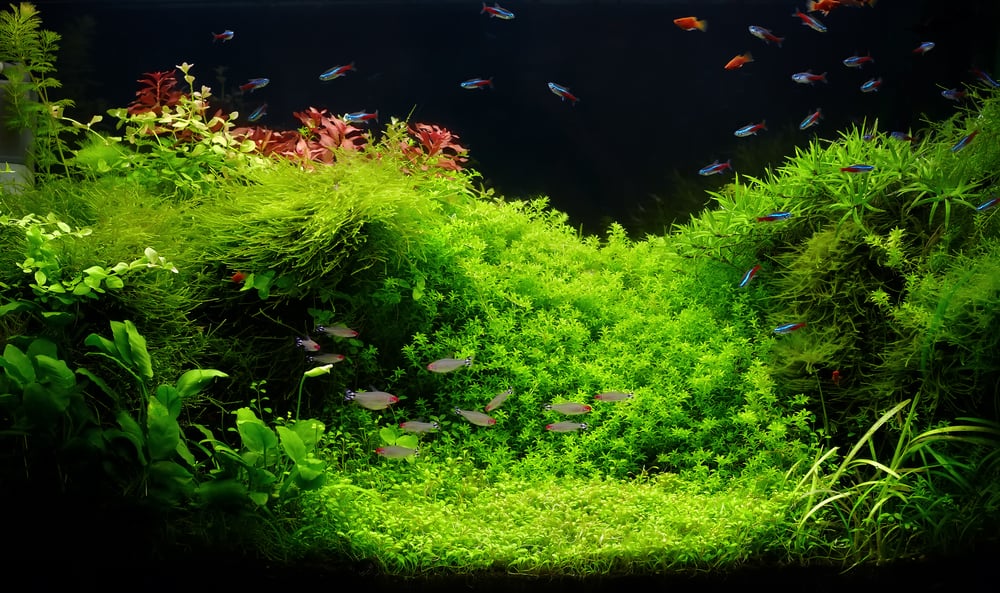
Dwarf hairgrass is tolerant of a wide range of temperatures from 50° to 83° Fahrenheit, hence its worldwide distribution.
The water pH needs to be in the neutral range of between 6.5 and 7.5, as the plant doesn’t thrive in very alkaline or acidic water. Water hardness should be moderately soft at around 2 to 10 dGH.
Lighting
In nature, Dwarf hairgrass grows along the shoreline or in shallow waters where there’s plenty of sunlight for photosynthesis. So, in an aquarium setting, the plants do need a fairly good amount of light. Although most standard aquarium lighting is adequate for Dwarf hairgrass, do make sure that the light is not filtered or dimmed by floating plants or decorations.
Fertilizers
Dwarf hairgrass benefits from the use of liquid fertilizer and a substrate that’s rich in nutrients. To encourage the growth of a lush carpet of plants, you should include a layer of aquatic plant soil underneath the substrate.
The plant also does very well if fed with CO2, although it does prefer root tabs rather than liquid.
How To Plant Dwarf Hairgrass
A major factor in successfully growing Dwarf hairgrass is that you take care to plant it correctly.
Start by deciding where you want the plants to be. If you want to create a carpet effect, leave one to two inches of space between each plant so that they have enough room to grow. When arranging the plants, create a box pattern with one specimen at each corner of the box and one in the center. The plants will send out runners across and through the substrate to quickly fill in any gaps.
Place individual sections of hairgrass into the substrate to a depth of about an inch, using a pair of aquascaping tweezers. Ensure that all the roots are below the substrate’s surface and the leaves are above it. If you want to, trim the plants at the front of the carpet, leaving the ones at the back longer to create a tiered, 3-D effect.
How To Maintain Dwarf Hairgrass
To ensure that your plants receive good water circulation around the base, you’ll need to trim them regularly. Trimming the hairgrass also encourages the plants to spread horizontally. Trim the blades of grass using sharp aquascaping scissors so that you don’t tear the leaves, and use a net to scoop up the trimmings so that they don’t clog your filter.
Once the plants are established, and the carpet is thick, you may want to remove a few plants periodically to thin them out. That helps to keep the plants healthy, ensures good water circulation, and guarantees that adequate nutrition is available for all the specimens. If you used nutrient soil as a planting medium, you would need to supplement that with plant tabs after a couple of months.
Hair algae can be a problem if you have it growing in your tank, as it can choke the Dwarf hairgrass plants, inhibiting their growth, and robbing them of nutrients. If algae is an issue in your aquarium, try limiting the number of hours that the tank lights are switched on for, add some CO2 to the water, or introduce some algae eaters to the setup.
How To Propagate Dwarf Hairgrass
Dwarf hairgrass is very good at self-propagation when given the right conditions. However, manipulating the process is not as easy as it is with some aquatic plant species. That’s largely because the plant naturally spreads by sending out runners from its roots, rather than by producing seeds.
The runners spread through the substrate, sending up new plants as they grow.
However, once the initial bed of plants is established, they will spread rapidly across the bottom of the tank without intervention from you. If your plants are growing too slowly, you can speed up the process by ensuring that the tank has plenty of nutrients and CO2 and making sure that the plants are receiving enough light. Also, slightly increasing the water temperature will encourage more rapid plant growth.
Final Thoughts
Dwarf hairgrass is a charming little plant that can be cultivated to create a stunning, vibrant green carpet in your aquarium. The plant is easy to grow, suits a small tank, is tolerant of a broad spectrum of water parameters, and needs little maintenance, making hairgrass a good choice for a beginner.
I hope you enjoyed our guide to growing and caring for Dwarf hairgrass. Please tell us what you think of this delightful plant in the comments box below, and don’t forget to share this article with your friends if you liked it.
Check out our infographic and don’t forget to share!
